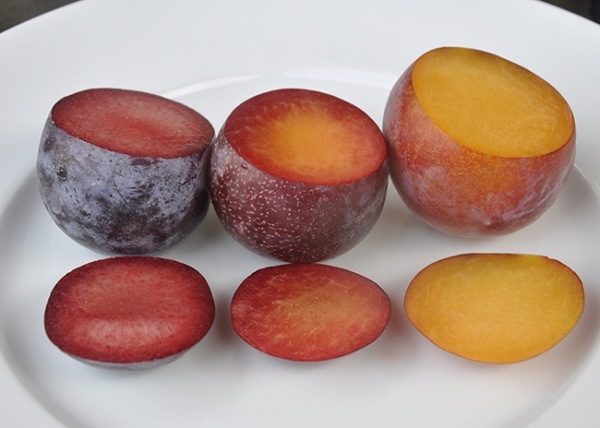Many gardeners want to grow unusual plants on their plots.which will be different from others, both in appearance and taste.
In this case, it will be appropriate to plant hybrid plantscombining the characteristics of several cultures.
Table of contents
The most unusual hybrids of apricot, peach, plum and apple
For a very long time, breeders have been trying to cross between different varieties and cultures,for getting perfect plants. Their fruits are notable for their attractive appearance and excellent taste.
There are many hybridsrepresenting a mixture of two or more cultures, the most unusual of them are:
- Sharafuga - A hybrid of plum, peach and apricot;
- Aprium and Plumkot - a mixture of plums and apricots;
- Apple and plum nectarine;
- Hybrid plum with cherry plum;
- Mayor - a combination of plums and towers.
Apricot plum
There are two varieties of hybrids of plum and apricot.
Aprium - this hybrid is 75% composed of apricot and 25% plum. This unusual fruit was bred in the 90s by the American breeder Floyd Zeiger.
Tasting assessment of apricot plum speaks of its outstanding taste and pronounced aroma. The pulp of the fruit is thick, less juicy than that of apricot, and the skin is smooth, like that of a plum.
In Aprium high fructose content, it speaks of the sweetness of the fruit.
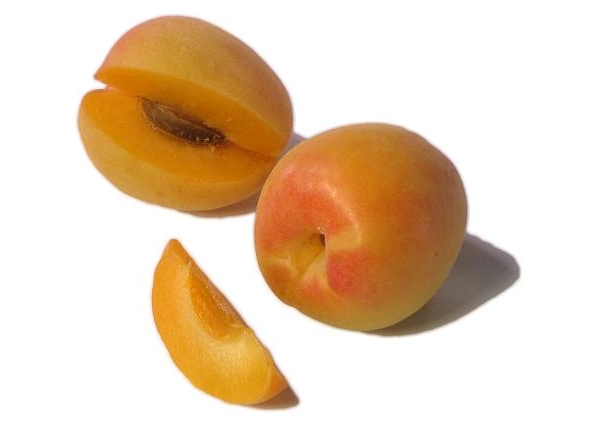
Pluot - A hybrid consisting of рик of apricot and ¾ of plum. It was bred in California in 1989, at the moment there are 11 varieties of this hybrid.
It is distinguished by its sweet, dessert taste; these fruits make excellent jams, compotes or wines. The taste of the fruit is more like apricot, and the appearance of the plum.
The skin is smooth, painted in purple, pink or even green. The flesh is juicy, red tint.
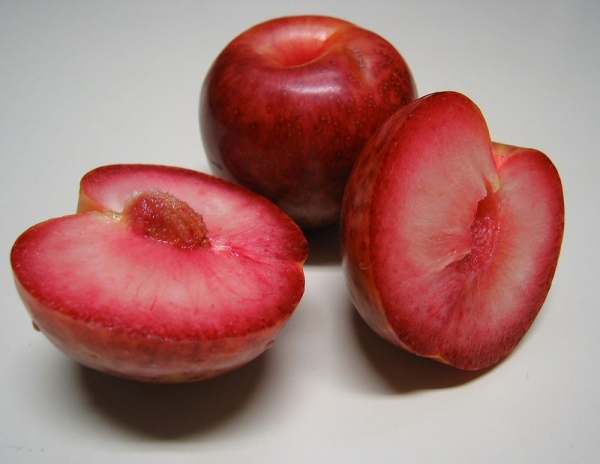
Plum Nectarine
Peach and Plum Hybrid is called plum nectarine. Many people do not realize that such a fruit as nectarine can be of two types, plum and apple.
They differ significantly among themselves both in taste and in appearance:
- plum nectarine is dense and not juicy, the flesh is rather firm and “thick”, yellow in color, well separated from the stone;
- in appearance, the fruits are round and resemble a peach;
- The skin is thin, smooth and matte.
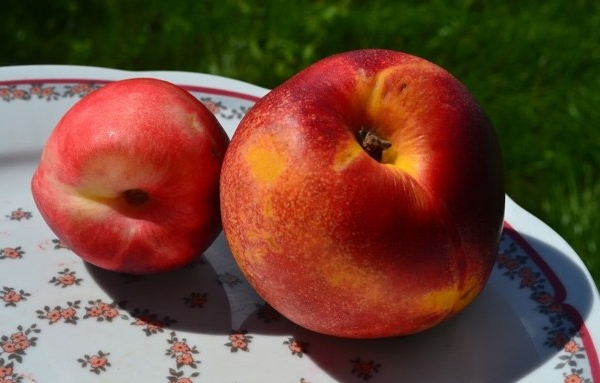
Apple Nectarine
The hybrid of peach and apple is called apple nectarine, its distinctive features are expressed in the following indicators:
- the flesh is very soft and juicy, most often cream or white. The taste of the fruit is sweet and sour;
- apple nectarines are almost 2 times less than plum, have a slightly elongated shape;
- the skin is smooth, glossy, pale pink.
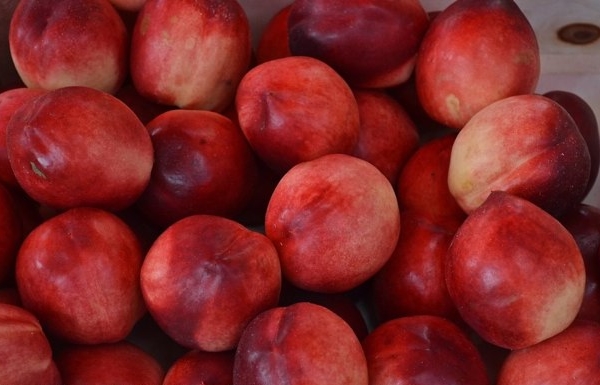
Hybrid of plum, apricot and peach
Fruit that was bred when crossing peach, plum and apricot called Sharafuga, and has the following qualities:
- the color of the fruit resembles plum and has a violet-purple hue;
- the shape is more rounded, similar to apricot, but the size of the fruit is closest to the peach;
- the flesh is juicy and sweet, the taste is a combination of plum and apricot. The bone is round, well separated.
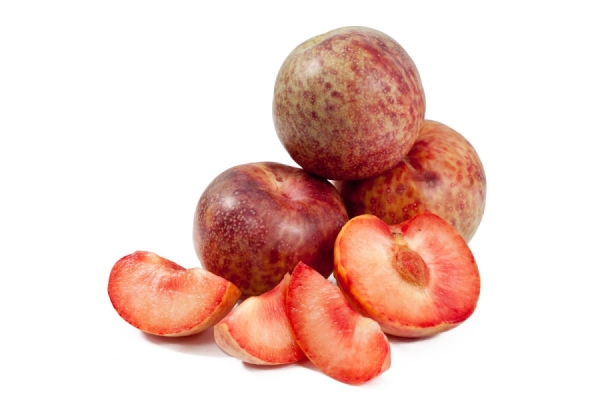
Pros and cons of hybrid plants
A hybrid is a plant obtained by crossing several varieties or cultures. Like any other plants, they have both pros and cons.
Advantages of hybrids:
- The appearance of the fruits of such plants is close to ideal, most often they have the same shape and size. Hybrid fruits and vegetables are pleasing to the eye and cause appetite. This is due to the fact that varieties are derived by trial and error, choosing the best samples.
- Productivity will always remain high.
- Good resistance to various diseases and pests compared to pure varieties.
- Plants are self-pollinating, so they can be grown without worrying about the procedure.
- In addition, hybrids differ unusual combination of tastes, and their consumption in food can significantly replenish the food supply.
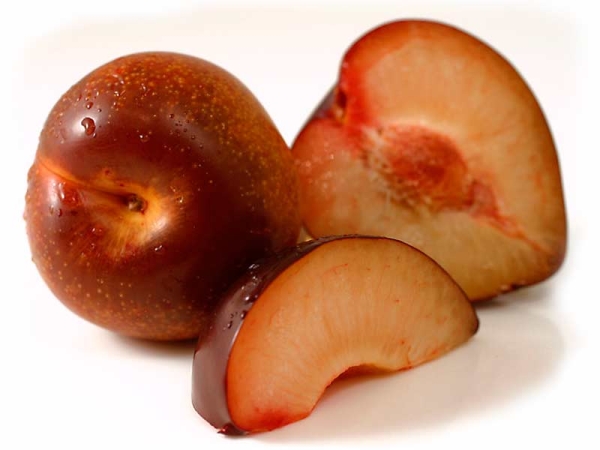
Disadvantages of hybrids:
- No seeds can be obtained from hybrid crops.
- Such plants are very capricious to growing conditions.
- Can grow only in fertile soil, it follows that the plants will require a large number of different fertilizing.
- Hybrid plants are very capricious for irrigation, they do not tolerate both drought and excessive soil moisture.
- Strong temperature drops can completely destroy the culture.
- Another disadvantage is the cost of seeds and seedlings, hybrids are much more expensive than pure varieties and crops.
Features of planting and care
Planting hybrids, you need to pay attention on the individual characteristics of specific crops and varieties. But also, between all of them there are several similar preferences and features that allow you to generalize such plants.
How and when to land
Landing takes place in several stages. The soil must be fertile, friable, groundwater should be at a distance of not less than 1.5 meters from the surface of the earth.
When choosing a site preference should be given to flat heights, on which precipitation and melting snow will not accumulate.
About a week before planting, you need to dig a hole that is proportional to the root system of the plant to be planted. For hybrid trees, the pit should be 80 centimeters wide and deep.
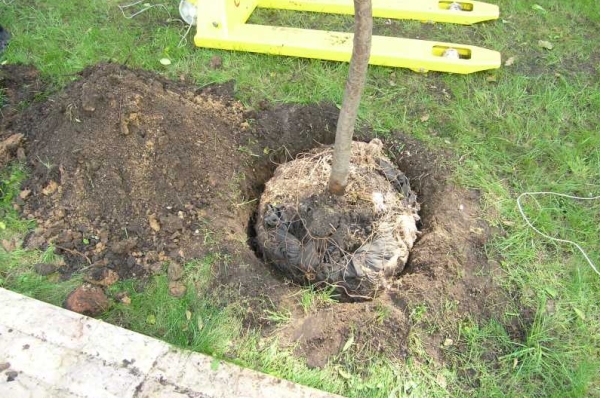
Then you need to dig it, while fertilizer consisting of:
- 2 buckets of humus or compost;
- 70 grams of superphosphate;
- 40 grams of potash fertilizer.
Considering that hybrids prefer neutral or alkaline soil, with an increased level of acidity, the earth is ground with the use of 0.3 kilogram of lime per square meter.
The roots of the seedlings are placed in a hole and gently straightened, then sprinkled with fertile soil.
After the plant is planted, it is necessary shower and grind plentifullyto avoid the rapid evaporation of moisture on sunny days.
Growing up
Given that hybrid plants are quite capricious to care, growing them should perform the following activities.
Feedings - hybrids are very demanding on the composition and quality of the soil, so they should be fertilized in a timely and thorough manner:
- In early spring, as soon as all the snow melts, nitrogen fertilizers, such as urea or ammonium nitrate, are introduced into the soil. Their consumption is 25 grams per 1 square meter;
- immediately after flowering, foliar dressing is applied, micronutrients are most commonly used, for example, Kemira-Universal preparation. This procedure is repeated 3 times with an interval of 10-15 days;
- in the fall, the soil around the plant is dug up and two buckets of humus, compost or slurry are added.
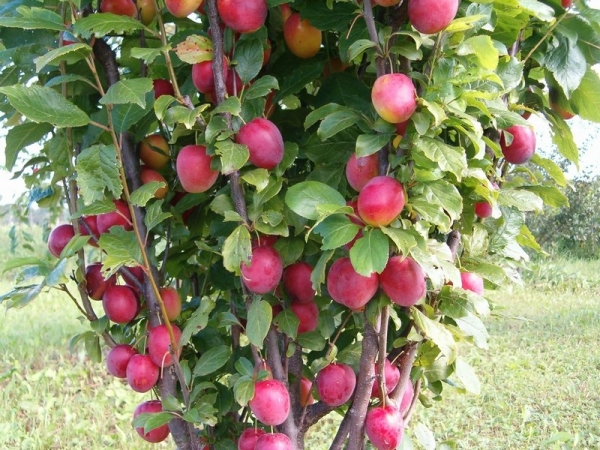
Pest Protection - resistance of hybrids to the attacks of various diseases or insects allows not to carry out additional procedures for prevention. It will be enough to perform sanitary pruning and whitewashing of the stem of hybrid trees in time.
Hybrid plants do not tolerate both aridity and excessive soil moistureTherefore, it is necessary to develop an optimal irrigation scheme, taking into account the particular climate, precipitation abundance, air humidity and other factors.
You may be interested in the following publications:
Many are mistaken in confusing hybrid plants with genetically modified ones. Hybrid fruits and vegetables do not harm the body and represent the result of crossing two cultures in a natural way.
Such fruits have good taste and attractive appearance, but, unfortunately, they are very capricious and picky about the care and composition of the soil.
